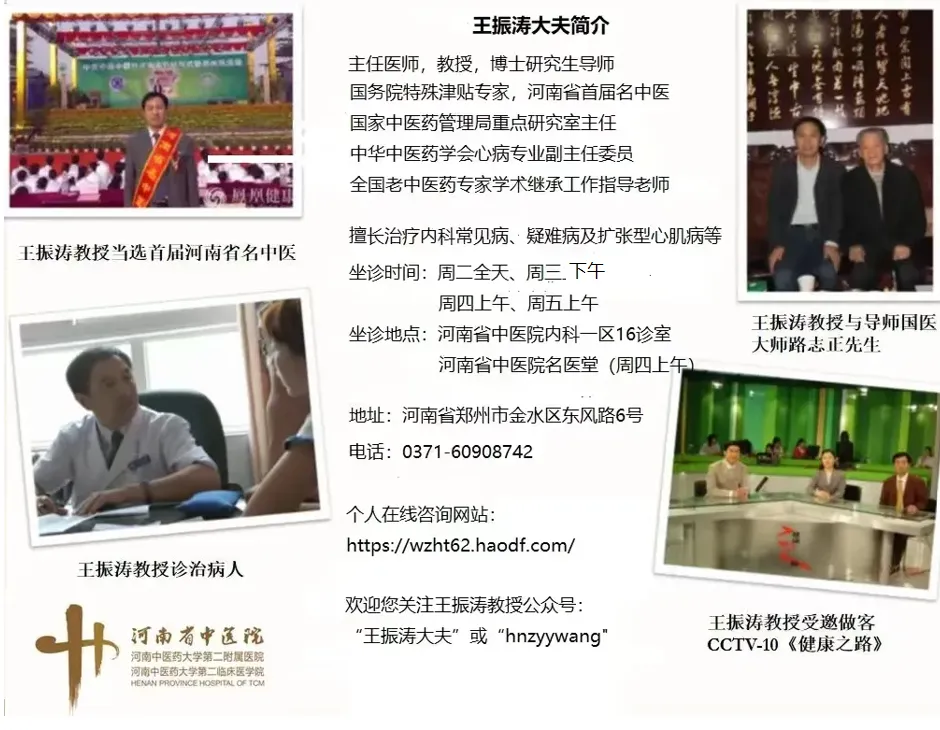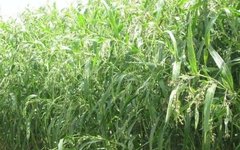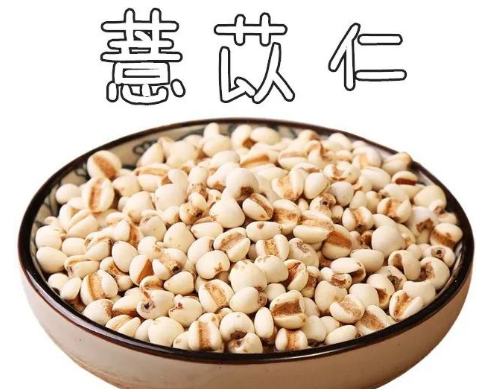
【Name】Coix Seed (Yì Yǐ Rén)
【Alias】Coix, Job’s Tears, Adlay, Coix Seed
【Source】The seeds of the plant Coix lacryma-jobi, a member of the grass family. The whole plant is harvested in autumn when the fruit matures, dried, and the seeds are separated from the husk and impurities, then dried again.
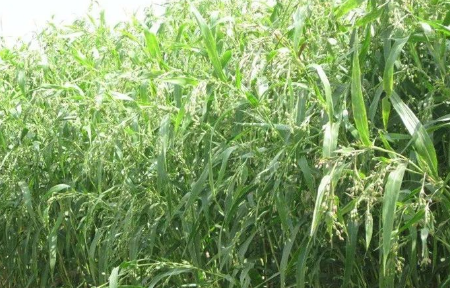
【Morphology】An annual or perennial herb. The fibrous roots are relatively thick, reaching up to 3 mm in diameter. The stem is erect, 1 to 1.5 meters tall, with about 10 nodes. The leaves are linear-lanceolate, up to 30 cm long and 1.5 to 3 cm wide, with rough edges and a prominent midrib on the back; the leaf sheath is smooth, with the upper part shorter than the internodes; the leaf tongue is hard, about 1 mm long.
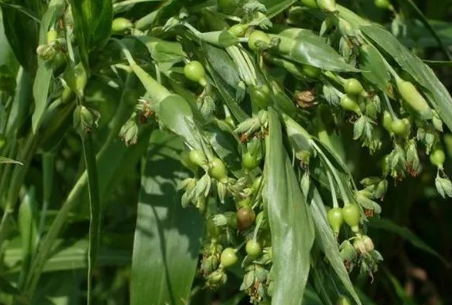
The inflorescence is a raceme; the female spikelets are located at the lower part of the inflorescence, surrounded by a hard, bead-like glume, which is about the same length as the spikelet; the first glume of the fertile spikelet is membranous at the base and thickly papery at the top, with a blunt tip; the second glume is boat-shaped, enclosed by the first glume, with a thick papery tip that tapers; the second outer lemma is shorter than the first outer lemma; the inner lemma is similar to the outer lemma but smaller, with three stamens that are degenerated; the pistil has a long style; the sterile spikelet degenerates into a long cylindrical lemma.
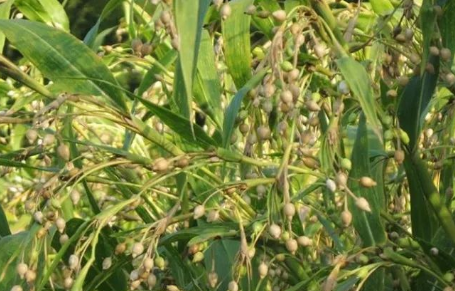
The male spikelets usually occur in 2 to 3 at a node; the stalkless male spikelet has a flat first glume, with the sides folded inward to form a ridge with unequal wings, blunt at the tip, with multiple veins; the second glume is boat-shaped, also with multiple veins; both the outer and inner lemmas are membranous; there are three stamens; the stalked male spikelet is similar to the stalkless one but smaller or more degenerated. The caryopsis is enclosed in a hard glume, oval or oval-spherical. The flowering period is from July to September, and the fruiting period is from September to October. The roots (Yì Yǐ Gēn) and leaves (Yì Yǐ Yè) of this plant are also used medicinally, detailed in specific sections.

【Distribution】Commonly found near houses, in wastelands, by rivers, streams, or in damp valleys. It is widely distributed across most regions of the country, generally cultivated. It is produced in most areas of China, mainly in Fujian, Hebei, and Liaoning.
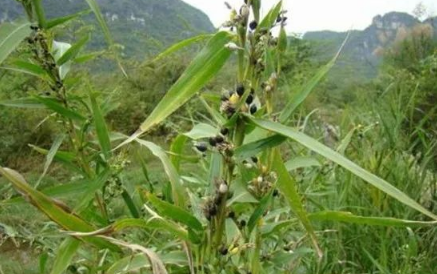
【Characteristics】Dried seeds are round or oval-shaped, with a wider and slightly flat base, and a blunt round tip, measuring 5 to 7 mm in length and about 3 to 5 mm in width. The surface is white or yellowish-white, smooth or with indistinct longitudinal stripes, sometimes retaining a brownish outer skin, with one deep and wide longitudinal groove on the side, the bottom of the groove is rough and brown, with a small brown dot at the base. The texture is hard, and when broken, the inside is white and powdery. It has a slight aroma and a sweet, bland taste. The best quality is characterized by large, plump, white, and intact grains.
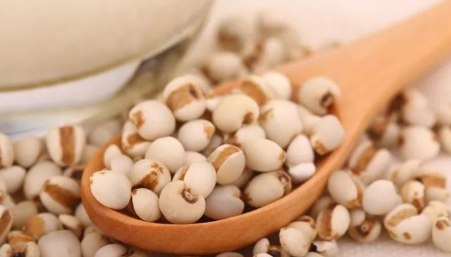
【Preparation】Roasted Coix Seed: Select clean Coix seeds and roast them in a pan over low heat until slightly yellow, then remove and let cool. Alternatively, they can be roasted with bran (100 jin of Coix seeds with 10 jin of bran). According to the “Treatise on the Preparation of Medicinal Herbs”: “For every one liang of Coix seeds, use two liang of glutinous rice to cook until the rice is done, remove the rice, and use the Coix seeds. If boiled in salty broth, it is a different preparation, which is also acceptable.”
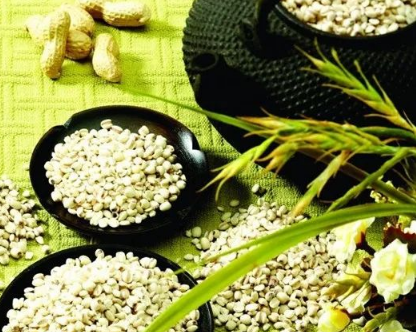
【Properties】Sweet and bland, cool in nature.
① “Shennong’s Herbal Classic”: “Taste is sweet, slightly cold.”
② “Bencao Biexu”: “Non-toxic.”
③ “Food Therapy Herbal Classic”: “Nature is neutral.”
④ “Bencao Zhengyi”: “Taste is sweet and bland, with a slightly cool nature.”
【Meridian Affinity】Enters the Spleen (Pí), Lung (Fèi), and Kidney (Shèn) meridians.
① “Compendium of Materia Medica”: “Yangming.”
② “Treatise on the Properties of Medicinal Herbs”: “Enters the Lung, Spleen, Liver, Stomach, and Large Intestine.”
③ “New Compilation of Materia Medica”: “Enters the Spleen and Kidney meridians.”
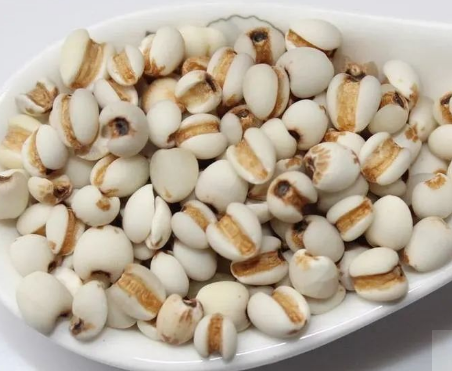
【Functions】Strengthens the Spleen, nourishes the Lung, clears heat, and promotes urination. Used for diarrhea, damp bi syndrome, muscle spasms, difficulty in flexion and extension, edema, beriberi, pulmonary atrophy, lung abscess, intestinal abscess, cloudy urination, and leukorrhea.
① “Shennong’s Herbal Classic”: “Indicated for muscle spasms, inability to flex and extend, wind-damp bi syndrome, and shortness of breath.”
② “Bencao Biexu”: “Eliminates evil qi from the muscles and bones, benefits the intestines and stomach, reduces edema, and promotes appetite.”

③ “Yao Xing Lun”: “Indicated for pulmonary atrophy with cough and expectoration of pus and blood, and shortness of breath. Boil and take to break the five streams of toxic swelling.”
④ “Food Therapy Herbal Classic”: “Eliminates dry and damp beriberi.”
⑤ “Bencao Shiyi”: “Warms qi, indicated for thirst and kills roundworms.”
⑥ “Introduction to Medicine”: “Indicated for shortness of breath and chest tightness.”
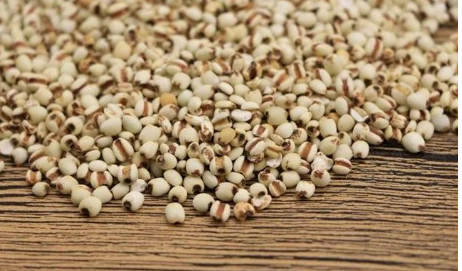
⑦ “Compendium of Materia Medica”: “Strengthens the Spleen and benefits the Stomach, nourishes the Lung and clears heat, dispels wind and overcomes dampness. Cooked in rice, treats cold qi; boiled in decoction, promotes urination and relieves heat dysuria.”
⑧ “Pharmacology of National Medicines”: “Treats water retention in the stomach.”
⑨ “Illustrated Guide to Chinese Medicinal Plants”: “Treats pulmonary edema, damp pleurisy, urinary obstruction, chronic gastrointestinal diseases, and chronic ulcers.” (Effects and Functions of Coix Seed)
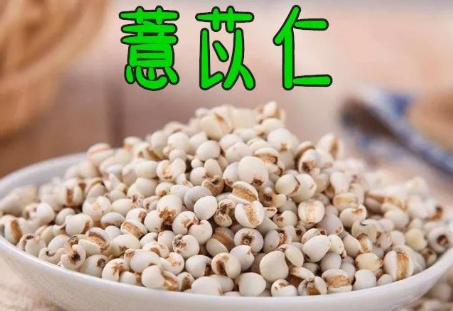
【Dosage】Internal use: decoction, 0.3 to 1 liang; or in powder form.
【Precautions】Caution in cases of spleen deficiency with constipation and in pregnant women.
① “Bencao Jing Shu”: “For conditions of dry stools and scanty urination due to cold causing spasms, and in cases of spleen deficiency without dampness, it is contraindicated. Avoid during pregnancy.”
② “Bencao Tongxuan”: “Not suitable for those with diarrhea and sinking qi.”
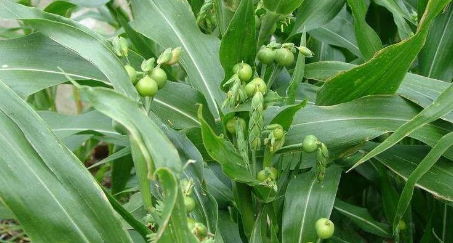
【Formulas】① For patients with body aches, fever, and severe symptoms in the afternoon, known as rheumatism, caused by sweating in the wind or prolonged exposure to cold: Ephedra (Má Huáng, remove nodes) 0.5 liang (soaked in decoction), Licorice (Gān Cǎo) 1 liang (roasted), Coix Seed (Yì Yǐ Rén) 0.5 liang, Apricot Kernel (Xìng Rén) 10 pieces (peeled, roasted). Grind into a powder, take 4 qian, boil with 1.5 cups of water until reduced to 1 cup, strain and take warm, avoiding wind. (“Jin Kui Yao Lue” Ephedra, Apricot Kernel, Coix Seed, Licorice Decoction)
② For rheumatism, limb weakness, and back pain: Coix Seed (Yì Yǐ Rén) 1 jin, Mulberry (Zhen Sāng Jì Shēng), Angelica (Dāng Guī), Chinese Angelica (Chuan Xù Duàn), Black Water (Cāng Shuǐ, soaked in rice wash and roasted) each 4 liang. Divide into 16 doses, decoct and take. (“Guang Ji Fang”)
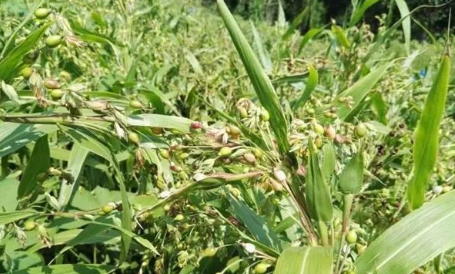
③ For chronic rheumatism, to tonify qi, benefit the intestines and stomach, reduce edema, eliminate evil qi from the chest, and treat muscle spasms: Coix Seed (Yì Yǐ Rén) powdered, cooked with Japonica Rice (Jīng Mǐ) to make porridge, consumed daily. (“Compendium of Materia Medica” Coix Seed Porridge)
④ To dispel rheumatism, strengthen bones, and tonify the Spleen and Stomach: Coix Seed (Yì Yǐ Rén) powder, brewed with Quinoa (Qū Mǐ) to make wine, or cooked in a bag to drink. (“Compendium of Materia Medica” Coix Seed Wine)
⑤ For edema and shortness of breath: Yuan Li Ren 2 liang. Grind, filter with water, and cook with Coix Seed rice, consume twice daily. (“Dú Xíng Fāng”)
⑥ For pulmonary atrophy with expectoration of pus and blood: Coix Seed (Yì Yǐ Rén) 10 liang. Crush, boil with 3 sheng of water, reduce to 1 sheng, add a little wine and take. (“Méi Shī Jí Yàn Fāng”)
⑦ For lung abscess with cough and expectoration, and chest tightness: Cook Coix Seed (Yì Yǐ Rén) in bitter wine until concentrated, take warm. If there is blood in the lungs, it should be expelled. (“Fàn Wāng Fāng”)
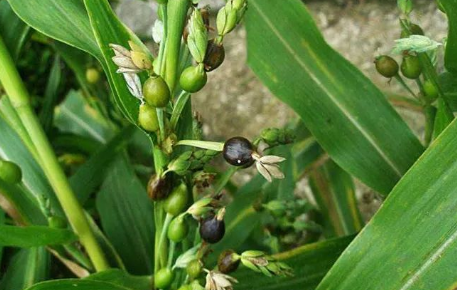
⑧ For lung abscess with hemoptysis: Coix Seed (Yì Yǐ Rén) 3 taels. Mash, add 2 large cups of water, a little wine, and divide into two doses. (“Jì Shēng Fāng”)
⑨ For intestinal abscess, with symptoms of abdominal pain, tenderness, and no fever, pulse rapid, indicating pus in the intestines: Coix Seed (Yì Yǐ Rén) 10 fen, Fu Zi 2 fen, Baijiao 5 fen. Grind the three ingredients, take a spoonful with 2 sheng of water, boil down to half, take warm, and urinate. (“Jin Kui Yao Lue” Coix Seed, Fu Zi, Baijiao Powder)
⑩ For intestinal abscess: Coix Seed (Yì Yǐ Rén) 1 sheng, Peony Root (Mǔ Dān Pí), Peach Kernel (Tāo Rén) each 3 liang, Melon Seed (Guā Bàn Rén) 2 sheng. Boil the four ingredients in 6 sheng of water until reduced to 2 sheng, divide into two doses. (“Qiān Jīn Fāng”)
⑪ For thirst and excessive drinking: Cook Coix Seed (Yì Yǐ Rén) in porridge and drink, and eat the porridge. (“Compendium of Materia Medica”)
⑫ For sand and stone heat dysuria, with unbearable pain: Yù Shū (all parts can be used), decoct in water and drink hot in summer, or cold in winter, as needed. (“Yáng Shì Jīng Yàn Fāng”)
The above content is sourced from the internet, with gratitude to the original author!
